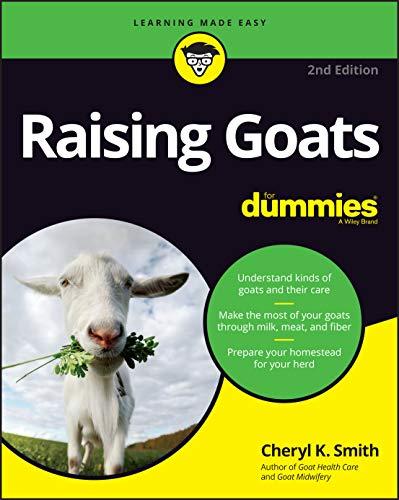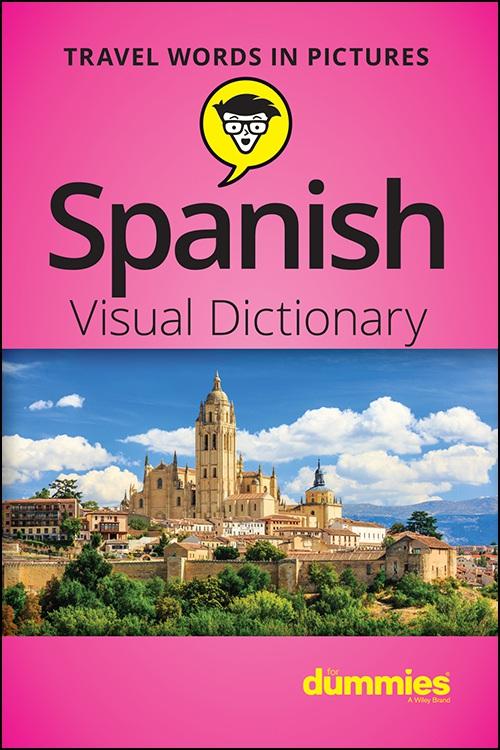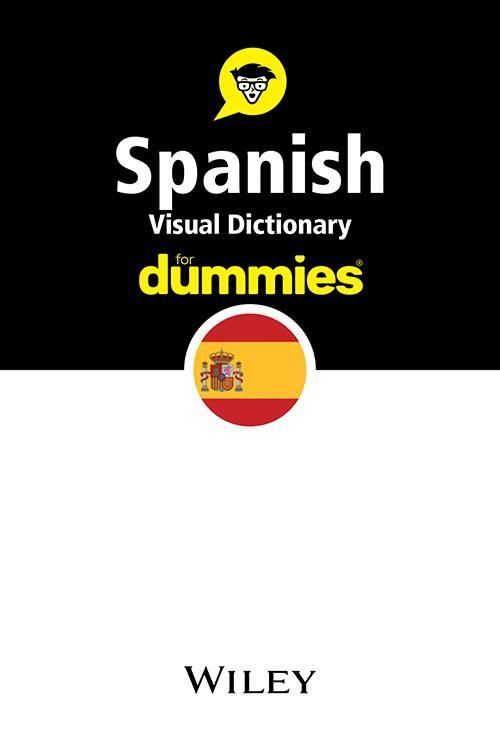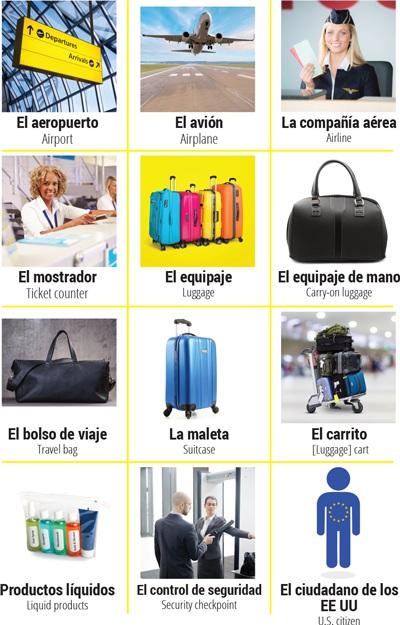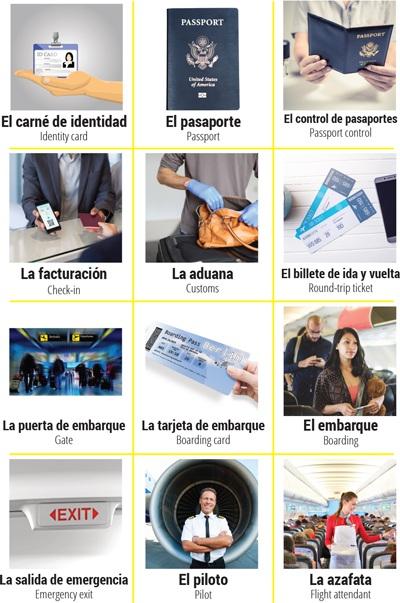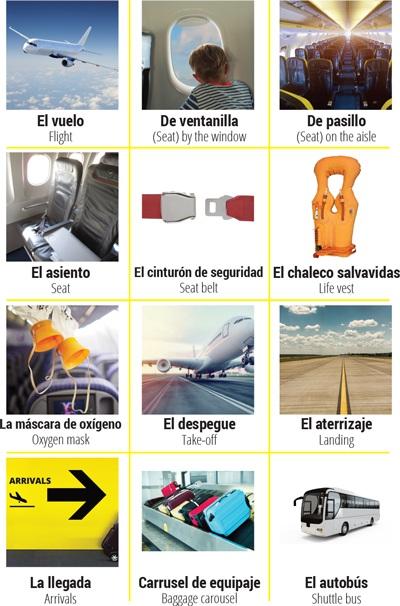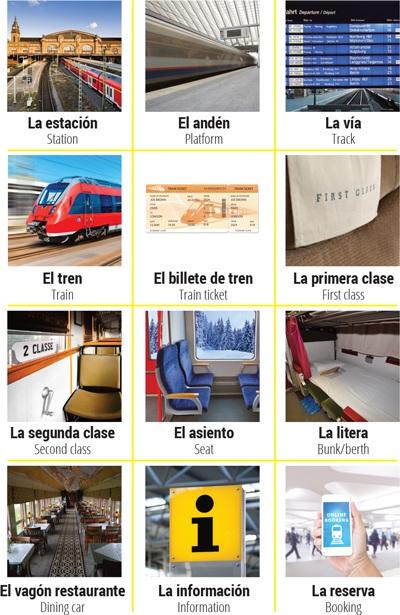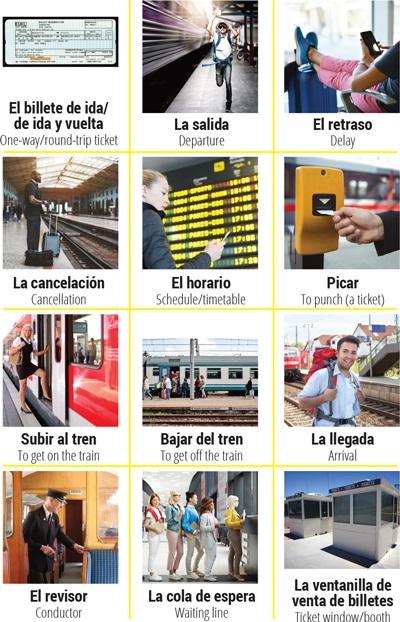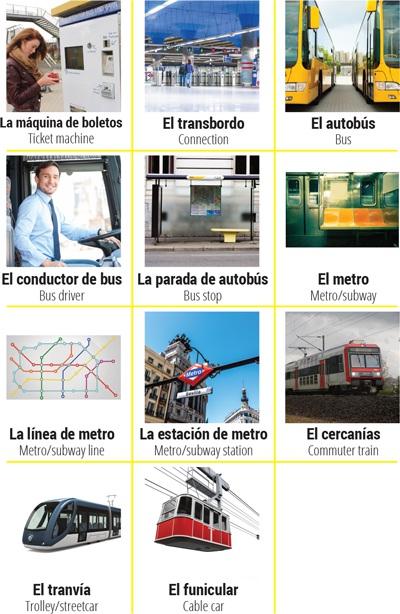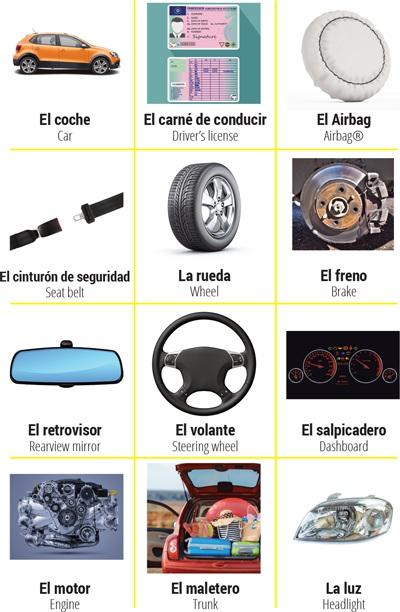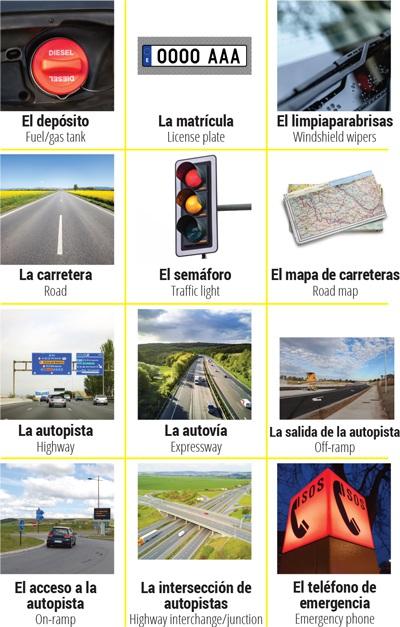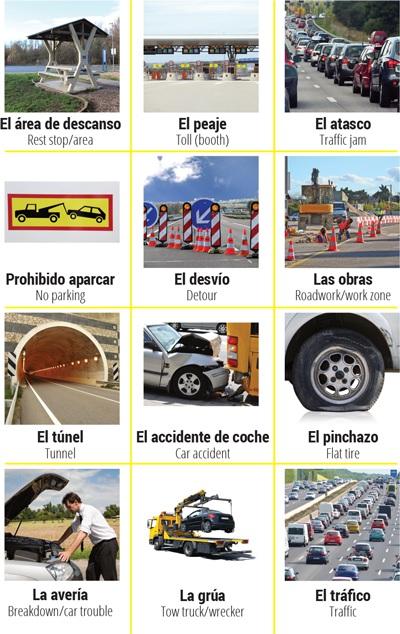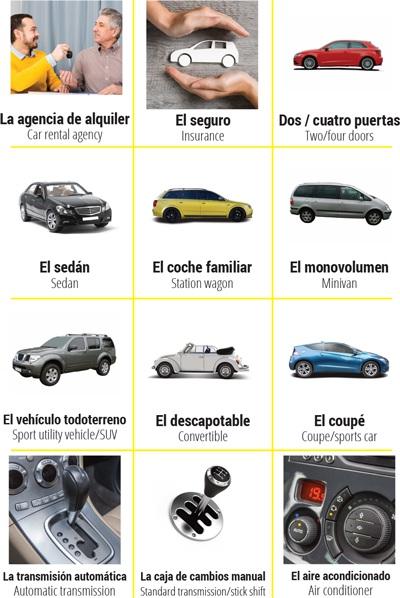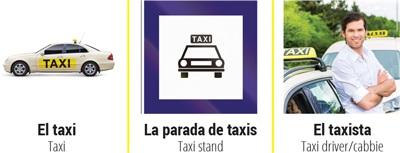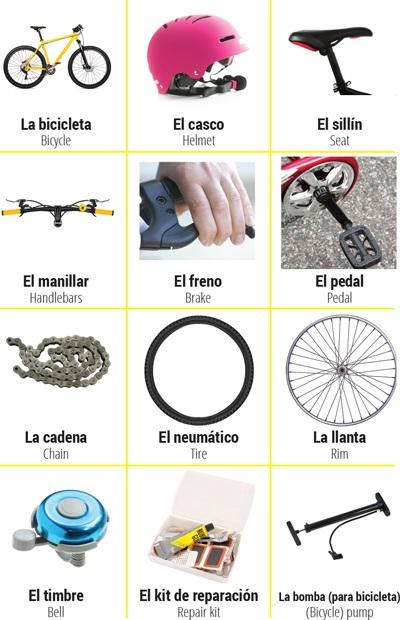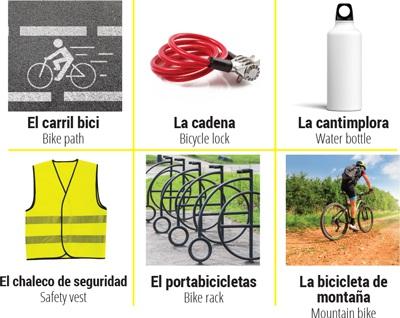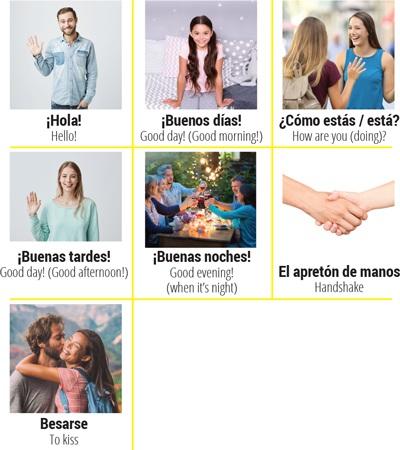Spanish Visual Dictionary For Dummies®
Published by John Wiley & Sons, Inc.
111 River St
Hoboken, NJ 07030-5774
www.wiley.com
Copyright © 2021 by John Wiley & Sons, Inc , Hoboken, New Jersey
No part of this publication may be reproduced, stored in a retrieval system or transmitted in any form or by any means, electronic, mechanical, photocopying, recording, scanning or otherwise, except as permitted under Sections 107 or 108 of the 1976 United States
Copyright Act, without the prior written permission of the Publisher Requests to the Publisher for permission should be addressed to the Permissions Department, John Wiley & Sons, Inc , 111 River Street, Hoboken, NJ 07030, (201) 748-6011, fax (201) 748-6008, or online at http://www wiley com/go/permissions
Trademarks: Wiley, For Dummies, the Dummies Man logo, The Dummies Way, Dummies.com, Making Everything Easier, and related trade dress are trademarks or registered trademarks of John Wiley & Sons, Inc. and/or its affiliates in the United States and other countries, and may not be used without written permission WQA and the WQA logo are trademarks or registered trademarks of the Water Quality Association All other trademarks are the property of their respective owners John Wiley & Sons, Inc , is not associated with any product or vendor mentioned in this book
LIMIT OF LIABILITY/DISCLAIMER OF WARRANTY: THE PUBLISHER AND THE AUTHOR MAKE NO REPRESENTATIONS OR WARRANTIES WITH RESPECT TO THE ACCURACY OR COMPLETENESS OF THE CONTENTS OF THIS WORK AND SPECIFICALLY DISCLAIM ALL WARRANTIES, INCLUDING WITHOUT LIMITATION WARRANTIES OF FITNESS FOR A PARTICULAR PURPOSE. NO WARRANTY MAY BE CREATED OR EXTENDED BY SALES OR PROMOTIONAL MATERIALS. THE ADVICE AND STRATEGIES CONTAINED HEREIN MAY NOT BE SUITABLE FOR EVERY SITUATION. THIS WORK IS SOLD WITH THE UNDERSTANDING THAT THE PUBLISHER IS NOT ENGAGED IN RENDERING LEGAL, ACCOUNTING, OR OTHER PROFESSIONAL SERVICES IF PROFESSIONAL ASSISTANCE IS REQUIRED, THE SERVICES OF A COMPETENT PROFESSIONAL PERSON SHOULD BE SOUGHT NEITHER THE PUBLISHER NOR THE AUTHOR SHALL BE LIABLE FOR DAMAGES ARISING HEREFROM THE FACT THAT AN ORGANIZATION OR WEBSITE IS REFERRED TO IN THIS WORK AS A CITATION AND/OR A POTENTIAL SOURCE OF FURTHER INFORMATION DOES NOT MEAN THAT THE AUTHOR OR THE PUBLISHER ENDORSES THE INFORMATION THE ORGANIZATION OR WEBSITE MAY PROVIDE OR RECOMMENDATIONS IT MAY MAKE FURTHER, READERS SHOULD BE AWARE THAT INTERNET WEBSITES LISTED IN THIS WORK MAY HAVE CHANGED OR DISAPPEARED BETWEEN WHEN THIS WORK WAS WRITTEN AND WHEN IT IS READ.
For general information on our other products and services, or how to create a custom For Dummies book for your business or organization, please contact our Business Development Department in the U S at 877-409-4177, contact info@dummies biz, or visit www wiley com/go/custompub For information about licensing the For Dummies brand for
products or services, contact BrandedRights&Licenses@Wiley.com.
Library of Congress Control Number: 2021933184
ISBN: 978-1-119-71712-6; ePDF: 978-1-119-71717-1; ePub: 978-1-119-71713-3
Spanish Visual Dictionary For Dummies®
To view this book's Cheat Sheet, simply go to www.dummies.com and search for “Spanish Visual Dictionary For Dummies Cheat Sheet” in the Search box.
Table of Contents
Cover Title Page
Copyright Introduction
¡Vamos!
Let’s go!
El avión
El tren y los transportes públicos
El coche
La agencia de alquiler
El taxi
La bicicleta
¡Hola!
Basic Communication
Decir hola
Pedir cortésmente, agradecer y disculparse
Decir adiós
Los problemas de comunicación
El horario
¡Mi camino!
Getting around
Algunos puntos de referencia
Las direcciones
Los puntos de interés en la ciudad
Los aseos públicos
El clima
Los paisajes
Algunos puntos de referencia
¡Buen provecho!
Enjoy your meal!
Algunos utensilios de cocina
Las diferentes comidas y platos
El desayuno
La carne y el embutido
El pescado y los mariscos
Las verduras
Los almidones y las legumbres
Los huevos y los productos lácteos
La fruta
La fruta y nueces
Los aliños
Los diferentes restaurantes
Las reservas
Algunos platos
Algunos platos
Las especialidades locales
Los postres
Los menús específicos : alérgicos, vegetarianos, niños
Las bebidas sin alcohol
Las bebidas alcohólicas
La cuenta
¡Buenas noches!
Good night!
Las camas
Los tipos de alojamiento
Suministros y servicios
El hotel
El camping
El apartamento
En el cuarto de baño
¡Salgamos!
Outings
¿Cuánto cuesta?
El dinero
Las tiendas
El supermercado
El supermercado
Los recuerdos y la artesanía
La ropa
El calzado
Los accesorios y las joyas
Al aire libre
De interior
En la playa
En la piscina
El cine
El teatro
La música
El museo
Las salidas y las fiestas
¡Cuidado!
Caution!
El cuerpo
La cabeza
Los médicos
Los pacientes y los síntomas
La farmacia y los medicamentos
El hospital
La policía, la guardia civil y los bomberos
Connect with Dummies
End User License Agreement
Introduction
This Visual Dictionary For Dummies is your ideal travel companion. It can be carried conveniently and consulted quickly; all you have to do is show the picture of the thing you’re talking about or of the situation you wish to describe, and presto! And since the pictures are accompanied by the corresponding English words and their Spanish translations, you will also be able to learn a lot of new vocabulary!
Sounds, Rhythm, and Intonation
Spanish and English have a lot in common, including a common history. While Spanish is a Romance language and English is Germanic, a portion of the English language was influenced by Romance sources and vice-versa. Many centuries ago, as these languages were still fairly new, they began to merge as the Germanic and Roman people increased communication. This common history means our two vocabularies also have much in common in fact, 30 percent to 40 percent of all words in English have a related word in Spanish.
The sounds: the vowels
Simple vowels
In English, the vowels are divided into two groups: the so-called long or tense vowels, and the so-called short or lax vowels. Spanish does away with the distinction all vowels are pronounced alike.
agua (A): The Spanish “a” sound in agua is the same as the “a” sound in English word father. deber (E): The Spanish “e” is pronounced like the “eh” in the
English word web.
dificil (I): The Spanish “i” is pronounced like the “ee” in the English word deed.
otoño (O): The Spanish “o” sound in otoño is a good match for the long “o” sound in the English word oak.
sur (U): The Spanish “u” sound in sur matches the vowel sound we have in the English word tool.
Blending your
words
Yes, Spanish speakers tend to talk fast! That means words tend to blend together and you sometimes don’t make a clear distinction from the end of one word and the beginning of another. This is especially true in the following cases:
When the last letter of a word is the same as the first letter of the next word
When the last letter of a word is a consonant and the first letter of the next word is a vowel
When the last letter of a word is a vowel and the first letter of the next word is a vowel
Intonation
Intonation in Spanish deciding which syllable to stress is particularly difficult for English speakers. Words are stressed in a different rhythm than in English. Don’t worry, though; if you follow a few simple guidelines, you’ll soon be speaking Spanish like a native:
Words that end with vowels are stressed on the next-to-last syllable.
Words that end with an “n” or an “s” are also stressed on the next-to-last syllable.
Words that end with a consonant that is not an “n” or an “s” are stressed on the last syllable.
Exceptions to the rules above are marked with an accent over the vowel to be stressed.
The sounds: the consonants
Most Spanish consonants match the sound of English exactly, but you’ll need to pay particular attention to some consonants that are tricky for English speakers to pronounce.
“ll”: The “ll” has the same sound that the letter “j” does in a lot of English words juice, jade, June, and July, for example. That means juice and lluvia (rain) both start with the same sound.
“y”: When you have a “y” at the beginning or middle of a word, the “y” sound is the same as the Spanish “ll” or the English “j” in juice. When you have a “y” at the end of the word, it acts as a vowel sound just like the “ee” in eerie.
“b” and “v”: This may take some getting used to. In Spanish, there is absolutely no difference between the sound of “b” and the sound of “v” — it will always be a “b” sound. That means Venezuela actually sounds like Benezuela.
“h”: Spanish speakers don’t generally pronounce the letter “h.” The one exception is when it is used in combination with a “c,” as in “ch.” When that occurs, it has the “ch” sound we have in English for chair or choose. (Think chimichanga or churros.)
“j”: The “j” sound is the same as the basic “h” sound in English; think Javier. There is a subtle difference depending on where you are — parts of Latin America versus regions in Spain, to be more specific. In some areas El Salvador, for example the “j” sounds very much like the English “h”; in Guatemala, the “j” sound still sounds like an “h,” but it has a more ragged, raspy feel to it.
“r”: When used at the beginning, middle, or end of a word, Spanish speakers “roll their rs,” which is something English speakers rarely do. The closest we come is when we try to
imitate a dog by saying rrruuuufff rrrruuuufff! That means the “r” in the Spanish word roja is more like the “r” in rrrrrrrrro rrrrrrrro rrrrrrrrosey, goodbye.
‘ñ’: The “n with a little mustache on” will be a new phenomenon for English speakers. Just think of it as an “ny” combination, as in the English word lanyard. (The accent mark on the “n” is known as a tilde.)
“z”: Here, regional differences again play a role. If you are speaking Spanish in Latin America, there’s really no difference between “z” and “s” sounds, but if you’re in Spain and you want to pronounce the “z” sound correctly, you need talk as if you have a lisp, changing the “z” for a “th,” as in the English word thick. Some words that’ll help you practice the “z” sound are cereza (cherry), zapatos (shoes), and Suiza (Switzerland).
públicos
The train and public transport
Frases clave
¿De qué vía sale el tren para … ?
Key phrases
On what track does the train for leave?
Quiero un asiento en el sentido de la marcha I would like a seat facing the direction of travel
¿El tren está retrasado?
¿Me puede dar un plano de los autobuses / del metro?
¿Qué autobús / metro hay que coger para ir a … ?
¿Es directo o hay que hacer algún cambio?
Is the train running late?
Can you give me a bus/subway route map?
Which bus/subway do I need to take to get to … ?
Is it direct, or do I have to change
¿A qué hora es el primer / último metro?
Perdone, ¿está libre este asiento?
¿Dónde me tengo que bajar?
¿Hay autobuses nocturnos?
¿El 18 me deja en la estación central?
buses/trains?
What time is the first/last subway?
Excuse me, is this seat free?
Where do I have to get off?
Are there any overnight buses?
Will the 18 take me to the central station?




